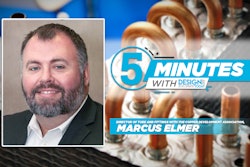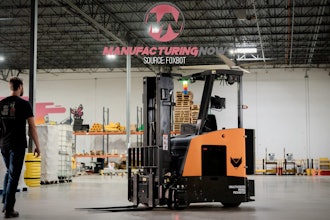Patchy Mice Test Baldness Cure
dNovo is a new Silicon Valley startup that says it has developed a cure for hair loss using personalized hair stem cells.
And to prove it, they shared a photo of a patchy bald mouse. The mouse received the company's induced hair stem cells seven months ago, and it's coming in nicely.
The company has created a direct reprogramming technology. The patent-pending tech takes a small slice of your skin or a few drops of blood and makes personalized hair stem cells that are then seeded into your scalp. You could see hair growth in one to three months.
The technology directly converts the type of cell, like skin cells, into hair stem cells. According to Dr. Ernesto Lujan, founder and CEO of dNovo, the process makes dNovo's system quick and scalable. Next, the company hopes to further optimize the tech and is looking for potential partners to help bring it to market.
Founded in 2018, the company recently raised $2.7M in seed funding.
Autonomous Robot Performs First Laparoscopic Surgery
The Smart Tissue Autonomous Robot (STAR) recently performed its first laparoscopic surgery autonomously -- that's the belly. It hasn't been tested on a human yet, but following successful procedures on the soft tissue of pigs, it's a step toward fully automated surgery for humans.
Designed by a team of researchers from Johns Hopkins University, STAR reconnected two ends of an intestine. The procedure is one of the most intricate and delicate tasks in surgery, according to assistant professor of mechanical engineering Axel Krieger.
Krieger says the STAR not only performed the procedure in four animals, but it had better results than humans performing the same procedure.
Soft-tissue surgery is typically tricky for robots because it's unpredictable, but STAR has a novel control system that adjusts the surgical plan in real-time, as a human surgeon would.
To make it happen, STAR has specialized suturing tools and state-of-the-art imaging systems that provide accurate visualizations of the surgical field.
Flying Car Becomes Airworthy
AirCar is a flying car, which really should be pretty easy to decipher from the name. Built by KleinVision out of Slovakia, AirCar has been under development since 2017.
In June 2021, the flying car completed its first inter-city flight, flying about 50 miles. It took off on grass and landed on pavement, though.
AirCar undergoes quite the transformation from plane to car — however complicated folding in the wings and pulling in the tail looks, it takes less than three minutes.
While the craft has completed more than 70 hours of test flights as well as more than 200 takeoffs and landings, it was recently certified as airworthy by the local civil aviation authority.
A team of eight specialists spent more than 100,000 hours converting the initial design drawings into the 2,200-pound, two-seat prototype that was certified. Certification opens the door to mass production, and the company believes the AirCar could forever shake up travel for the mid-distance commuter.
The company has ambitious plans, including a two-seat and four-seat version of the AirCar. But possibly the most ambitious one is an amphibious version that lands on water.






















